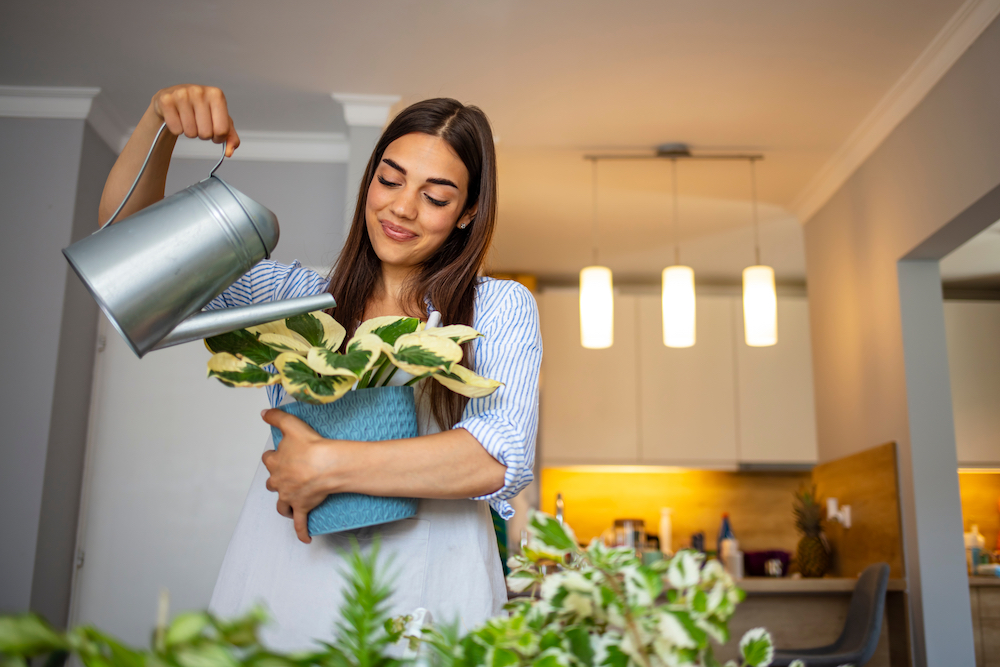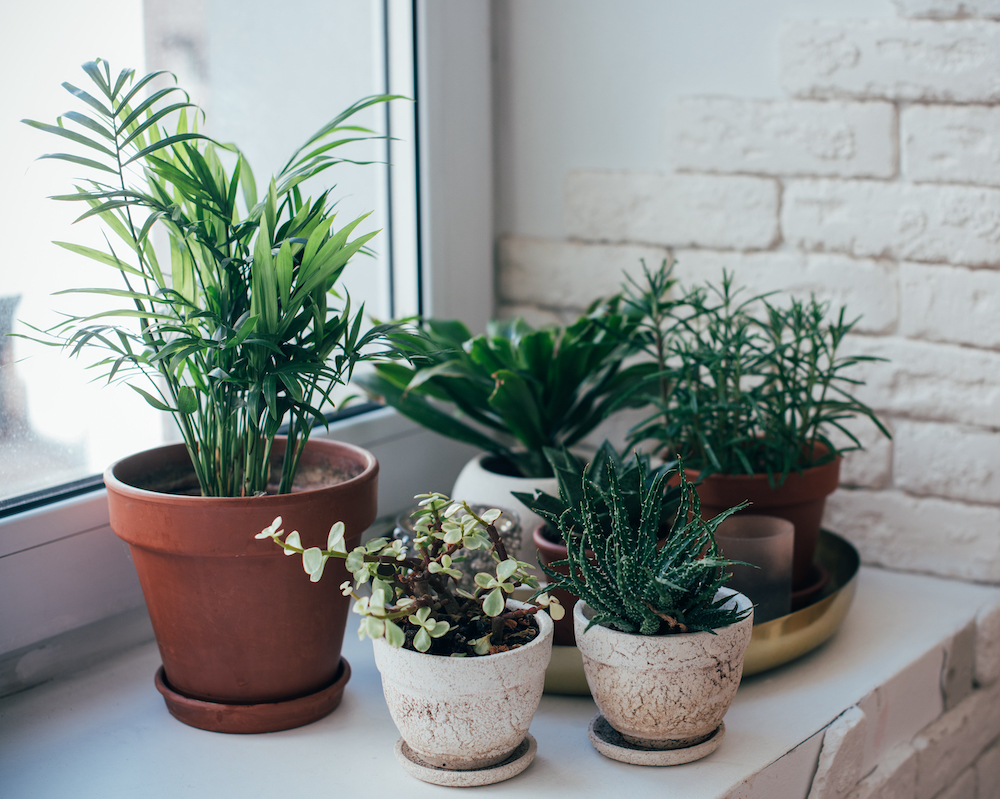Tips to Make Your Apartment a Plant Sanctuary!
An indoor garden may provide a respite from the outer world. It may be a source of great joy for many people. Whether you live in one of the luxury apartments in Westwood or a large mansion, including some plants in your house can start to improve your peace and wellness. Plants may assist with loneliness and sadness, improve your mood, and provide a pleasant living space: caring for a living item gives us a satisfying purpose.
- Choose the correct plants for a good night’s sleep. Although plants emit oxygen during the day, it is essential to remember that when photosynthesis ceases at night, most plants switch gears and emit carbon dioxide. Plants like orchids, succulents, snake plants, and bromeliads, on the other hand, do the reverse and emit oxygen, making them ideal sleeping plants for luxury apartments in Westwood.
- Take care not to expose your plant to too much sunlight. Most indoor plants dislike direct sunlight, so keep this in mind when arranging plants in your apartment. In addition, there are clear warning signals to check for, such as leaf burn, spotting, or abrupt leaf fall.
- Some plants enjoy the heat. When it comes to planting style, knowing what plants are suitable for what area is essential. The bathroom is ideal for air plants and kokedama (Japanese hanging moss ball). The surplus moisture from your daily shower helps those plants thrive. If you have a sunroom or a hot room like in the luxury apartments in Westwood, fill it with ferns, palms, succulents, and cactus, which will thrive in the heat.

ANTHURIUM
Anthurium’s showy blossoms provide vibrant color for eight weeks or more each year (Anthurium andraeanum, also known as flamingo flower). Flowers are generally red, although hybrids are pink, lavender, white, and even green. Anthurium flower blooms make excellent cut flowers since they are long-lasting. However, keep in mind that the attractive, heart-shaped leaves carry deadly sap, so keep dogs and children away from them.
Size: up to 2 – 3 feet tall and 2 feet broad.
Growing parameters include medium to bright light with no direct sunlight; 65-80°F; uniformly wet soil (barely moist in fall and winter).
SPIDER PLANT
The spider plant (Chlorophytum comosum) looks fantastic in a hanging basket or on a pedestal, especially when its “children” overflow the pot. The cultivar ‘Vittatum,’ which has a white stripe down the center of each leaf, is the most common, but all-green plants are also available. Brown leaf tips on spider plants are caused by fluoride-tainted water, over-fertilization, low humidity, or dry soil conditions. Using scissors, cut away any broken leaves. If your tap water contains fluoride, use rainwater or distilled water.
Size: 6 – 12 in. tall and 6 – 24 in. broad.
Growing parameters include medium to bright light, temperatures ranging from 65 to 75 degrees Fahrenheit, and equally wet soil.
ARROWHEAD VINE
This rich foliage plant preserves its variegation (dark green leaves with white along the veins). Use tiny plants in mixed baskets and tabletop gardening together with other foliage plants. Train vining varieties to stand erect on a moss pole. In fluorescent lighting, arrowhead vine (Syngonium podophyllum) thrives.
Size: 6 – 36 in. tall and 6 – 36 in. broad.
Growing parameters include low to medium light, temperatures ranging from 60 to 75 degrees Fahrenheit, and equally wet soil.
PARLOR PALM
Since Victorian times, the graceful, upright parlor palm (Chamaedorea elegans) has been a favorite houseplant. Strap like green leaflets on feathery fronds ranges in length from 9 to 24 inches. It’s ideal for filling an empty corner and can tolerate lower light levels than other palms. Young plants will thrive in a terrarium while they are still tiny.
Size: 1 to 8 feet tall and 1 to 3 feet broad.
Growing parameters include medium to low light, temperatures ranging from 55 to 75 degrees Fahrenheit, and equally wet soil.
ENGLISH IVY
Because of its tiny appearance, this flexible leaf plant is ideal for hanging baskets or pots. It’s one of the greatest houseplants for topiary shapes or as a groundcover behind bigger houseplants. Hang English ivy (Hedera helix) stems from a mantel or shelf. The stems can grow rather long, but they can be readily managed by trimming.
Size: up to 6 – 12 in. tall and 6 – 72 in. broad when trailing.
Growing parameters include medium to bright sunshine; 55 to 70°F; moderate to high humidity; equally wet soil.
HOYA
Hoya (Hoya spp.) is a trailing plant with smooth, glossy leaves and pink or white blooms with red centers. Hoya gets its second popular name, wax plant, from its waxy, pleasantly perfumed blossoms. Plant it in hanging baskets or train it to grow on a trellis. Make a wreath by wrapping long vines around a shape. Topiaries can be made from small-leaf varieties. Hoya carnosa is the simplest of the clan.
Size: 6 – 12 in. tall and 48 in. broad when trailing.
Growing parameters include Medium (for leaves alone) to strong light (for flowers); 55-75° fairly dry soil.
CHRISTMAS CACTUS
Christmas cactus (Schlumbergera x buckleyi), one of several species of easy-care cactus, has an elegant arching look with long segmented stems and whorls of soft blooms in lilac, deep rose, salmon, red-orange, or white. Plants typically bloom between mid and late December. After the flowering period is over, prune by pinching or cutting off numerous parts with a sharp knife. This promotes the plant to branch, resulting in a larger, more blossomed plant.
Size: up to 8 – 12 in. tall and 6 – 18 in. broad.
Growing parameters include bright light, temperatures ranging from 70 to 80 degrees Fahrenheit (55 degrees Fahrenheit in the fall), and fairly dry, well-drained soil.
SNAKE PLANT
This robust, carefree cactus grows practically anywhere. Snake plant (Sansevieria spp.) tolerates neglect but thrives with proper care. The leathery, sword-shaped leaves have a yellow or white edge. Snake plant is ideal for novices, but experienced houseplant gardeners like its striking upright shape as well. It throws up a long stem of greenish fragrant blooms when cultivated in strong light. Dwarf rosette cultivars are ideal for use as desktop or tabletop plants.
Size: 6 – 48 in. tall and 6 – 36 in. broad.
Growing parameters include fairly dry soil; low to strong light 60-85°.

